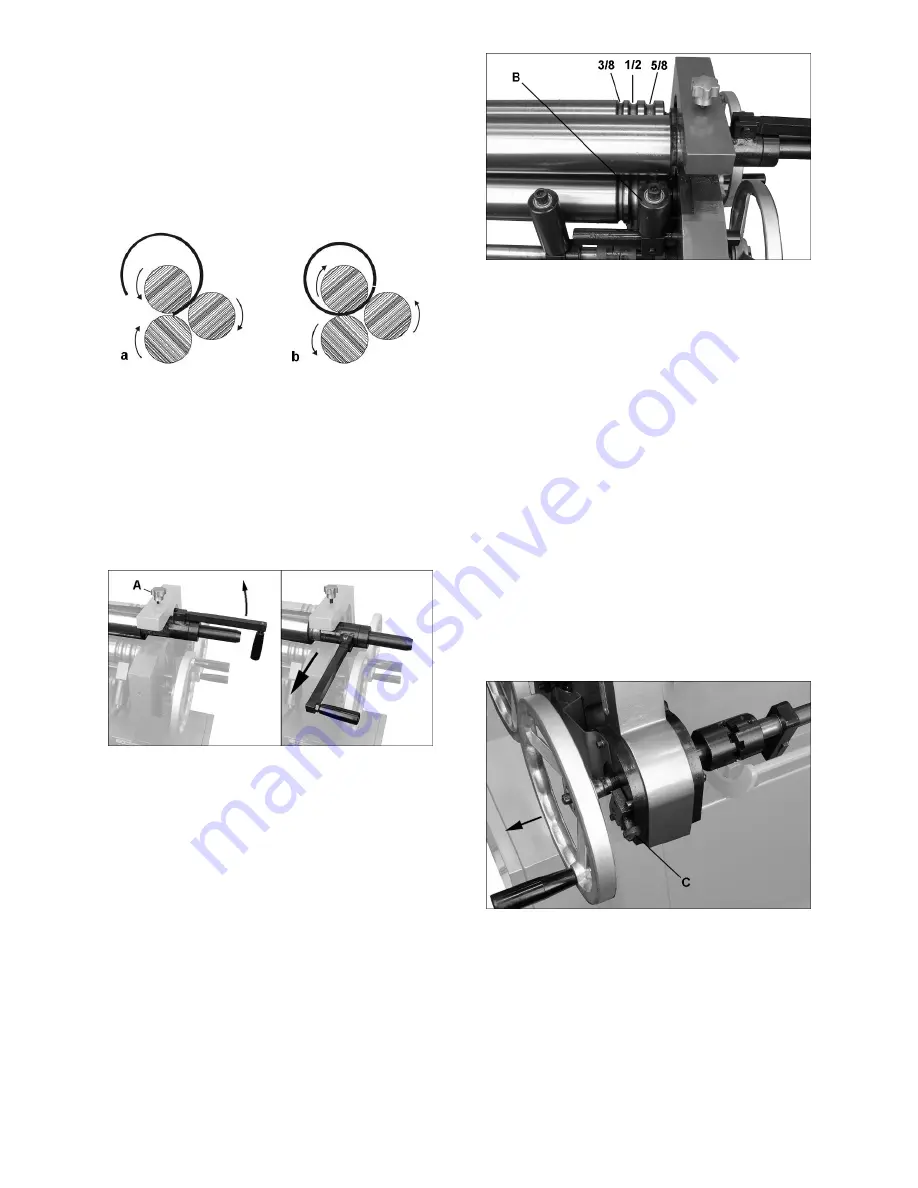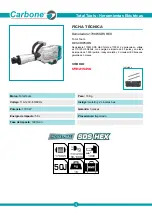
10
10.4
Forming a tube
A tube can often be made with a single pass through
the machine, as follows:
1. Adjust pinch roll as needed to accommodate
workpiece thickness.
2. Feed workpiece into machine. As it nears the
end (Figure 10-3a), stop machine and reverse
direction (Figure 10-3b).
Figure 10-3
3. To remove tube from stationary roll:
4. Position cone forming guides out of the way.
5. Loosen knob (A, Figure 10-4), pull handle
upward, then toward front. Pull stationary roll
out of notch.
6. After tube is removed, reposition stationary roll,
making sure handle is rotated back to original
position. Tighten knob (A).
Figure 10-4
10.5
Bending wire
There are three wire grooves at the end of pinch roll
and idler roll, to accommodate 3/8, 1/2, and 5/8-inch
wire. See Figure 10-5.
Loosen cone forming guide (B, Figure 10-5) and
swing it out of the way or remove it.
Use smallest groove into which wire will comfortably
fit. Bend the wire using same principles as described
for forming a radius. To make a complete loop of
wire, use the instructions for forming a tube.
Figure 10-5
10.6
Forming a cone
1. Prepare workpiece to appropriate shape for
desired cone.
2. Adjust idler roll and/or pinch roll to allow more
free space at left end of rolls. This is done by
disengaging clutch coupling, as follows:
Idler roll:
Pull pin (C, Figure 10-6) to disengage
from groove. Pull out on handwheel until pin
engages next groove. Rotating handwheel will
now raise or lower right end only of idler roll.
(Reverse procedure to re-engage).
Pinch roll:
Loosen set screw in left half of
bushing (D, Figure 10-7), and slide it away. A
flat blade screwdriver may be needed for initial
prying apart. (When re-engaging, use a small
threaded clamp to push halves together, then
tighten set screw.)
3. Slide workpiece against cone forming guide
(Figure 10-8) and tightly clamp workpiece at
right end. Proceed with forming operation.
Figure 10-6: Idler roll disengagement






































